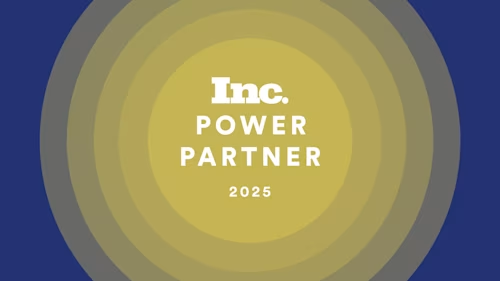
How to Choose the Right Enterprise CLM Software for Your Business
CLM technology now exists, with solutions that are easier and more cost-effective to integrate across an entire organization.

As technology—and your clients’ expectations—evolve, finding the right contract management solution is quickly becoming the easiest way to reduce operational costs, increase productivity, and stay one step ahead of client expectations.
But what does it take to find the right contract lifecycle management (CLM) software for your business? Enterprise contract management solutions that are easier to implement and easier to use are within reach—you just have to know what to look for.
What to look for in enterprise CLM software
There are plenty of factors to consider when searching/evaluating for the perfect CLM solution. You have to think about your business’ current needs and your plan for the future, then weigh these against a long list of contract management software solutions.
Admittedly, sifting through the options can be difficult. For a complete list of capabilities to consider, we've created a checklist: Evaluating Contract Lifecycle Management (CLM) Solutions.
To help point you in the right direction, here are five basic factors that you should look for when selecting a CLM solution.
1. End-to-end automation and efficiency
An effective contract management solution streamlines every step in the contract management process. Pre-approved contract templates, for instance, accelerate the contract drafting process and eliminate opportunities for human error by providing reusable language for high-use documents, like NDAs or SOWs. As a result, contracts take just a few tweaks to finalize rather than a complete rewrite, and new documents take minutes to draft rather than days.
Many CLM solutions even offer drag-and-drop tools that help non-technical users configure the most complex parts of the agreement process—automating contract routing and communication to all contributors...in the right order. By automating these repetitive, manual steps in the process, a CLM solution takes the headache out of the contract management process and dramatically reduces the time your employees spend on administrative tasks.
2. A searchable, central contract repository
Tracking down a single paper-based contract can eat away at your employees’ time. In addition, misfiled or lost contracts remain a significant issue in business environments that are still ruled by paper. Docusign research found that, on average, 32% of professionals spend 30 minutes or more when locating a single contract.
CLM software provides an easier way to store and retrieve documents. Searchable contract repositories take contracts out of filing cabinets and put them somewhere much safer and easier to access: in a secure, cloud-based repository.
A digital solution makes it easy to find, store and organize your agreements—and eliminates the problems associated with analog (i.e, paper) document storage. But virtual contract repositories go far beyond simple store-and-search solutions, enabling you to organize documents by metadata like tags, date signed, date generated, contract type and other key identifiers. A CLM solution with a real-time contract repository feature turns finding and storing documents into an exact science—and removes the manual uncertainty out of critical administrative procedures.
3. An enterprise-wide solution
When you have disparate systems for key functions such as customer relationship management (CRM), configure price quote (CPQ) tools and electronic signatures, getting these tools to seamlessly work together can be frustrating. An integrated CLM solution, on the other hand, offers a digital infrastructure that integrates the contract process company-wide—increasing visibility and time-to-completion at every stage of the contract lifecycle process.
Enterprise CLM solutions also empower your organization for future growth. Choose onesolution that can support the contract process across multiple functions, and avoid purchasing additional single-point products that may not offer cross-functional integration with all systems. Launch your CLM solution where it can have the greatest initial impact— whether that’s sales, procurement or legal—then roll-out to other areas of your organization. A uniform contract management process increases visibility across teams and accelerates the speed at which you can expand your operational capacity.
4. Contract analytics
Risk management is a critical part of every contract’s lifecycle. Manually reviewing contracts for risks drains resources and introduces the opportunity for human error. Without a central contract repository or an automated risk management solution it’s difficult to identify existing contracts that harbor risky language. Hiring outside legal help or purchasing add-on tools are both costly and decrease your organization’s ability to effectively respond to risks.
High quality CLM solutions offer native contract analytics, which makes it easy to identify and mitigate risks across all departments. Look for a CLM solution that can calculate risk during the negotiation process, route contracts based on risk scores and position your business to make smarter negotiating decisions.
5. A solution that fits your organization's needs
Finding the right enterprise CLM solution for your business requires a certain level of self awareness. Here are few things you should keep in mind when selecting your enterprise contract management software.
Organization size: The more employees and departments you have, the harder it is for your organization to stay connected. As you scale your business, it’s important to find a CLM solution that can scale with your growth.
Departmental access: CLM implementation may start in sales as a solution to a specific issue, but all departments can benefit from an enterprise-wide contract management solution. Give your entire organization the access they need to familiarize themself with the software—so, when you’re ready to expand, your team is too.
Sales process complexity: While all sales units benefit from a streamlined, digital contract management processes, those that have highly technical or complex sales processes (subscription revenue models, service bundles, pricing approvals, etc.) benefit the most from the automation of administrative tasks.
Legal/compliance concerns: If you work in an industry with regulations like HIPAA, KYC/AML or FedRAMP, the ability to instantly assess risks in your contracts can be a gamechanger.
The existing workflows and internal structure of your business will also dictate which CLM is best for you. For instance, many organizations prioritize ease-of-use when selecting a CLM solution. Rather than spend resources trying to master a complex software solution, look for a CLM with an intuitive interface and user-friendly controls.
Finding a CLM solution that scales with your business
As new regulations and new technologies arrive, a forward-leaning enterprise CLM will give you the tools you need to survive in a business environment that is quickly evolving. With the right CLM software, you can avoid buying new technology or updating your single-point solution every few years.
Here are a few forward-looking factors to consider when selecting your enterprise contract management software.
AI-driven workflows
As your business expands, using AI to identify risks in existing languages or prepare contracts during the negotiation process becomes a necessity. Some of today’s leading CLM solutions have native AI capabilities.
For instance, Docusign CLM+ uses AI during the negotiation process to help quickly evaluate and manage risk—creating faster time-to-value for sales, legal and procurement teams. Additionally, post-execution AI solutions give your organization the ability to assess and eliminate risks in existing contracts. In these instances, AI can be used to identify and update reusable contract components—like force majeure clauses.
Consistent Innovation
A CLM solution that evolves with your industry and continually implements new technology helps prepare you for any future. Rather than employing a collection of single-point contract management software products that quickly become obsolete, find an enterprise CLM solution that values innovation.
For instance, as financial service providers transition away from using the London Interbank Offering Rate (LIBOR) as a benchmark for setting interest rates, there are an estimated $240 trillion worth of existing contracts that may need renegotiating or in-depth risk assessments. Something that is standard operating procedure today can quickly become a risk tomorrow. Having a solution that is built to proactively identify and mitigate risks, such as this, enables you to move your organization forward effortlessly.
Out-of-the-box solutions
Even some of the most advanced off-the-shelf solutions can require in-depth training or expensive customization before they are ready to deploy. The right CLM software for your organization provides solutions that are ready to deploy right out of the box. For instance, Docusign offers analytics packs that are pre-programmed to analyze and offer insights for specific use cases like:
LIBOR
Catastrophic events/force majeure
Brexit
Data privacy
GDPR compliance
NDAs
Mergers and Acquisitions
How to Find Everything You Need in One Place
Finding the right enterprise CLM solution for your business necessitates a careful balancing of your organization’s needs with industry-wide, macro concerns—like new regulations or technological innovations. As the only solution with a full suite of integrated AI products, Docusign CLM+ offers an easy way to minimize risks, streamline inefficient administrative procedures and lay the groundwork for scalable growth.
Austin Miller is a director of product marketing at Docusign.
Related posts
Docusign IAM is the agreement platform your business needs




